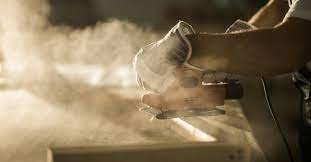The necessity of dust removal equipment in the industry
The necessity of dust removal equipment in the industry
With the development of modern industrial production, environmental protection is becoming more and more stringent. While protecting the environment, we also pay more and more attention to the physical and mental health of employees. Dust is inevitable, so dust removal equipment is getting more and more attention. Below we will Let us introduce the hazards of dust.

What does dust appear during industrial production?
Excessive dust will explode when exposed to an open flame. What is dust? How can this cause so much damage? Dust is a solid particle suspended in the air. According to IEC, solid particles with a particle diameter of less than 75 microns are defined as dust, including dust, smoke, mine dust, etc., which are all dust.
The dust will harm not only the environment but also human’s health
Although the presence of dust in the air is one of the main reasons for maintaining the temperature of the Earth, too much or too little dust in the air can have disastrous effects on the environment. In production and life, dust dominates, is the natural enemy of human health, and is the main cause of various diseases.
Long-term inhalation of high-concentration dust can lead to systemic diseases with diffuse and progressive fibrosis in the lungs. Such as inhalation of toxic dust such as lead, copper, zinc, and manganese, dissolved in the bronchial wall and absorbed, transported to the whole body through the blood, causing systemic poisoning. Lead poisoning is chronic. If the poisoned person has a fever or takes certain drugs, or drinks too much alcohol, it can also lead to acute poisoning.
It will cause various diseases
Excessive inhalation of soot and dust can cause hemolytic anemia; zinc oxide fume will be produced when zinc is burned, which will cause "metal fume fever" similar to malaria after inhalation; long-term inhalation of manganese and its oxides will damage the central nervous system, Adverse effects on the respiratory system and digestive system.
After exposure to the air or inhalation of dust, it will first cause local irritation to the skin, cornea, and mucous membranes, causing a series of injuries. Dust affects the respiratory tract, causing hyperactivity of nasal mucosa and telangiectasia in the early stage, and hypertrophic rhinitis will be formed for a long time, and then atrophic rhinitis will be formed due to lack of nutrition in the mucosa. Pharyngitis, laryngitis, trachea, and bronchitis can also occur. Dust affects the skin and can form acne, folliculitis, and pyoderma. If lead dust soaks into the skin, some small red spots will appear, which are called "lead rash". In addition, exposure to dust such as nickel, chromium, and chromates can cause lung cancer. Exposure to radioactive mineral dust can easily cause lung cancer, and asbestos dust can cause skin cancer.
Some organic dust, such as rags, animal skins, grains, etc., are often accompanied by pathogenic bacteria such as mycetes and actinomycetes, which enter the lungs of people with the dust and can cause pulmonary mycosis. At the same time, pneumoconiosis caused by long-term inhalation of production dust is a common and harmful occupational disease.

That’s why we need dust removal equipment
Dust removal equipment refers to equipment that separates dust from flue gas, also called dust collector or dust removal equipment. Industrial dust removal equipment uses underground dust removal water pipes and air pressure pipes to add certain additives to the water, introduce air pressure, and complete a series of processes through special equipment to generate foam, which is sprayed to the dust source through distributors and nozzle support components.
Before installing an industrial dust collector in every industry, it is first necessary to confirm the air volume of the dust point and the filtering wind speed, so that the industrial dust collector can be designed reasonably.

